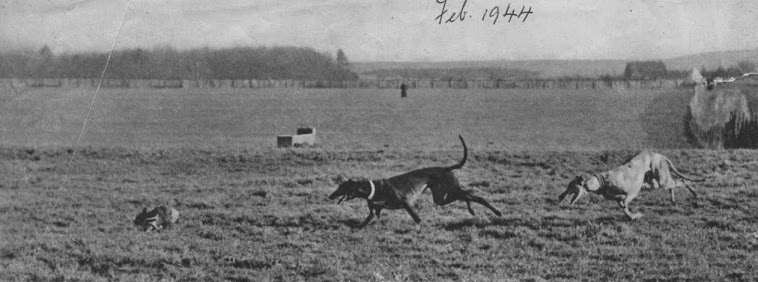These wonderful Roman mosaics of coursing were photographed in the
The origin of the greyhound has
never interested me greatly, anymore than the truth about evolution. As far as
the latter is concerned, the state of humanity might persuade one that
scientists have been “hunting the heel line” as foxhunters would put it,
following the trail in the wrong direction.
Charles Darwin and I have
something in common as we both went to the same college, but, after observing some
human specimens, I would have liked to have asked him whether it was not just
as likely that modern apes were a higher life form descended from homo
so-called sapiens rather than the other way round.
For me, an Anglo-Saxon, the
history of my country begins in 871 with Alfred the Great, and the history of
greyhound sport begins in 1776 with the founding of the Swaffham Society, the
first public coursing club. Even so, art and literature assure us that the greyhound
probably existed several thousand years BC, although supporters of pharaoh
hounds, salukis, and all sorts of curious hairy creatures would maintain that
the same evidence would justify their claims to have on the sofa at home the
original competitive hunting dog.
It cannot be denied, however,
that by the sixth century BC the author of the Book of Proverbs could write:
“There be three things that go
well, yea, four are comely in going:
A lion which is strongest among
beasts, and turneth not away for any;
A greyhound; an he goat also; and
a king, against whom there is no rising up.”
King James I, (reigned
1603-1625), who had commissioned this translation of the Bible, was a keen
coursing man, and so there may be a suspicion for some that a sycophantic translator
went for “greyhound” rather than pharaoh hound, saluki, afghan, whippet, or
Arabian hunting dog, but we may be pretty confident that two thousand six
hundred years ago the greyhound was already considered top dog. Mind you, a
greyhound being ranked only just in front of a billy goat might seem to devalue
its standing somewhat, although“an he goat” probably would have given some of my
dogs a run for their money, but at least both greyhound and goat outranked the
king in comeliness, not difficult in the case of the rather unappealing James
I.
Arrian, that famous coursing
apologist from the second century AD, tells us that the devotees of the Celtic
hound, as he called the greyhound, had special spiked dog clothing to ensure
that the breed’s pure blood wasn’t adulterated.
Rough-coated coursing dogs were
still about at the dawn of organised coursing in England

.jpg)
.jpg)
.jpg)